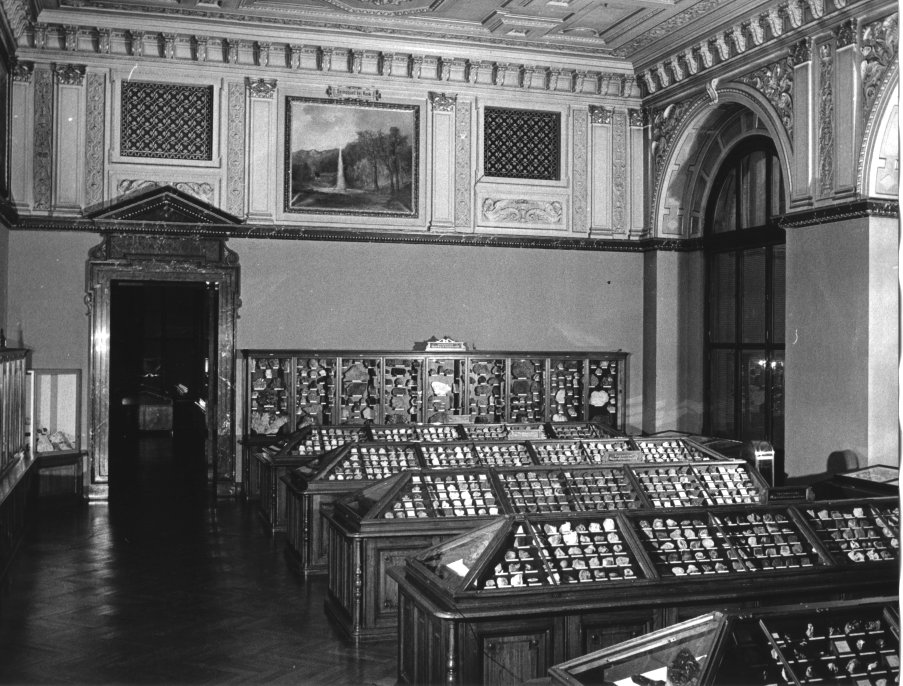

Systematic Mineralogy. First of all, the paintings in the Hall should be mentioned: Gold mining in Verespatak (Rosia Montana) in Siebenbürgen (Wilhelm Bernatzik); open-cast iron mine near Eisenerz in Styria (Robert Russ), and the coal works near Dux in Bohemia (Alois Schönn).
The most important samples of the mineral system (sulphides, halogenides, oxides, hydroxides, nitrates, iodates and carbonates) include:
Sellaite/Brumado (II/6); fluorite/Striegau (II/10), and gilgite (II/14); atacamite/Wallaroo (II/16); chrysoberyl/Takowaja (II/33); corundum/Sri Lanka (II/33); hematite/Gotthard (II/34); perovskite/Slatoust (II/38); rock crystal ("Japanese twins")/Dauphiné (II/46); rutile/Pfitsch (II/65); kassiterite/Schlaggenwald and Zinnwald (II/80 and II/66) and brookite/Frossnitz (II/83).
The displays in the wall cabinets along the sides are complementary to the systematic mineral display. Here, the following should be pointed out: antimonite/Shikoku (II/201); nagyagite/Nagyag (II/103); amethyst/Porkura (II/105); scepter quartz/North Carolina (II/106); rock crystal/Nepal (II/107); agate/Idar Oberstein (II/108), and manganite/Illfeld (II/109). Halite (Haarsalz)/Inowroclaw (II/131); sylvite/Strassfurt (II/131); fluorite/Northumberland (II/133); calcite ("crystallized sandstone")/Fontainebleau (II/135), and aragonite/Girgenti (II/137).
The two table-top glass cabinets in front of the windows contain new specimens acquired from Austria. The contents of these cabinets vary according to need.